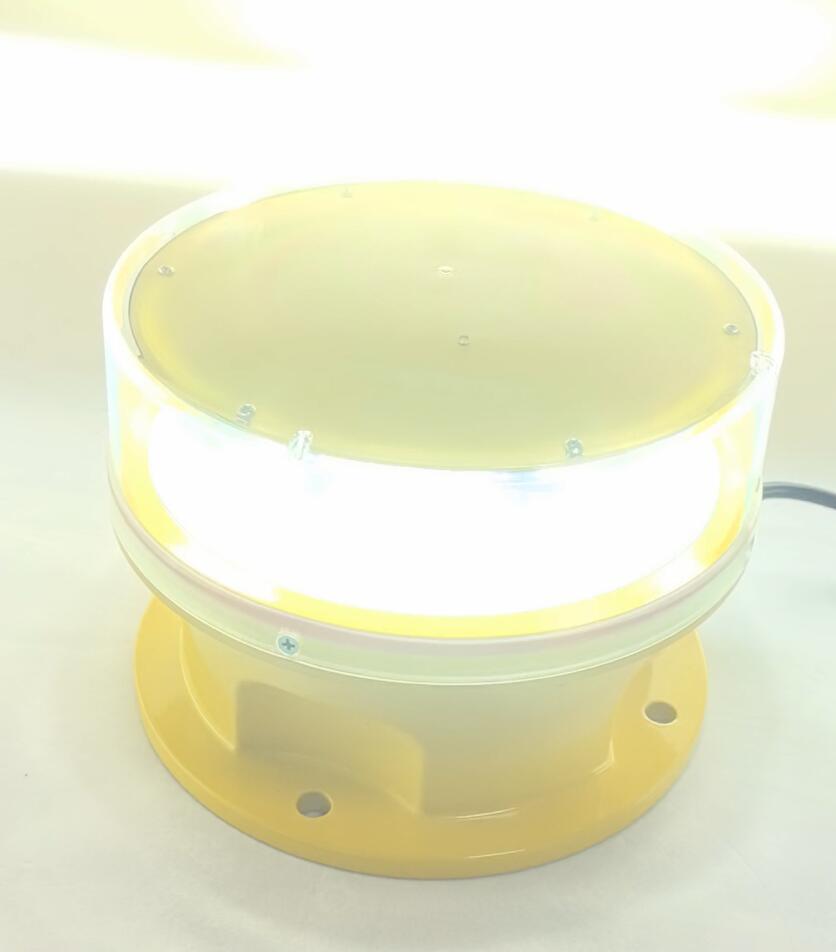LED Aircraft Warning Lights: The Brighter Future of Aviation Safety
The aviation industry has undergone a technological revolution in obstruction lighting with the widespread adoption of LED aircraft warning lights. These advanced lighting solutions have replaced traditional incandescent and xenon strobes, offering superior performance, energy efficiency, and reliability. As air traffic grows and urban structures reach unprecedented heights, LED aircraft warning lights have become indispensable for ensuring aviation safety. This article explores their benefits, regulatory compliance, and emerging innovations that are shaping the future of aerial hazard marking.
Why LED Technology Dominates Aircraft Warning Systems
1. Unmatched Energy Efficiency
Consumes 80% less power than conventional lighting
Enables solar-powered solutions for remote installations
Reduces operational costs significantly
2. Exceptional Longevity
50,000–100,000-hour lifespan (vs. 5,000 hours for xenon)
Minimal maintenance requirements
Fewer tower climbs for replacements

3. Superior Visibility Performance
Instant full-intensity illumination (no warm-up)
Precise light color meeting FAA/ICAO chromaticity standards
Consistent output throughout lifespan
4. Environmental Advantages
Mercury-free construction
Lower carbon footprint
Reduced light pollution through directional optics
Regulatory Standards for LED Aircraft Warning Lights
All LED aircraft warning lights must comply with strict aviation regulations:
FAA Requirements (AC 70/7460-1L)
L-810: Low-intensity red (32.5 candela minimum)
L-864/L-865: Medium-intensity white strobes (20,000 cd)
| led aircraft warning lights |
L-856/L-857: High-intensity white strobes (200,000 cd)
ICAO Annex 14 Specifications
Flash rate: 20-60 flashes/minute
Vertical beam spread: Minimum 3° above horizontal
Color coordinates within defined CIE ranges
International Certifications
ECE R65 (Europe)
EN 61820 (Global)
CASA (Australia)
Cutting-Edge Applications of LED Warning Lights
1. Smart Wind Farm Marking
Synchronized flash patterns across turbine arrays
| led aircraft warning light |
Radar-activated systems reducing light pollution
Integrated with SCADA for performance monitoring
2. Urban High-Rise Solutions
Architectural lighting integration
Adaptive brightness controls for light-sensitive areas
Dual-mode (red/white) configurations
3. Offshore Platform Lighting
Marine-grade corrosion resistance
Enhanced fog penetration optics
Helicopter landing zone compatibility
4. Temporary Obstruction Systems
Rapid-deployment LED units
Battery/solar hybrid operation
Modular designs for various structure types
Technological Breakthroughs in LED Warning Lights
1. Intelligent Adaptive Systems
Automatic intensity adjustment based on:
Ambient light conditions
Weather visibility
Aircraft proximity (ADS-B integration)
2. Advanced Thermal Management
Graphene heat dissipation
Self-regulating cooling systems
Wide temperature operation (-40°C to +70°C)
3. IoT-Enabled Monitoring
Real-time performance analytics
Predictive maintenance alerts
Remote configuration updates
4. Next-Gen Optical Designs
Microprismatic lenses for precise beam control
Hybrid reflector/refractor systems
UV-resistant polycarbonate housings
Overcoming Industry Challenges
1. Light Pollution Mitigation
Directional beam focusing
Community-friendly flash patterns
Dark-sky compliant designs
2. Extreme Environment Reliability
Arctic-grade cold weather operation
Desert heat resistance
Hurricane-force wind survivability
3. Wildlife Protection
Bird-safe flash frequencies
Insect-repellent wavelength options
Habitat-sensitive activation
The Future of LED Aircraft Warning Technology
AI-Optimized Performance
Machine learning for energy efficiency
Weather pattern anticipation
Traffic density adaptation
Advanced Power Solutions
Integrated wind/solar hybrid systems
Wireless power transmission
Solid-state batteries
Augmented Reality Integration
Holographic hazard displays
Pilot HUD compatibility
3D airspace mapping
Self-Maintaining Systems
Nanotech self-cleaning surfaces
Drone-assisted inspections
Modular hot-swap components
Conclusion
LED aircraft warning lights represent the pinnacle of aviation safety technology, combining unparalleled reliability with eco-friendly operation. As these systems continue evolving with smart features and adaptive capabilities, they're transforming from passive markers into intelligent components of global air traffic management networks.
For aviation authorities, infrastructure developers, and lighting engineers, embracing advanced LED aircraft warning light solutions means investing in:
Enhanced flight safety
Sustainable operations
Future-ready infrastructure
The illuminated path forward is clear – LED technology will continue lighting the way to safer skies for decades to come, adapting to new challenges like urban air mobility and autonomous drone traffic while maintaining the rigorous safety standards modern aviation demands.
